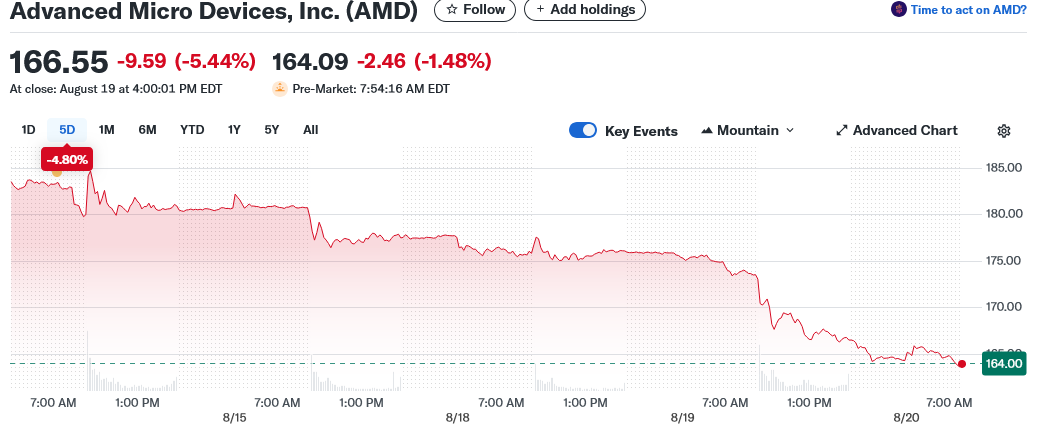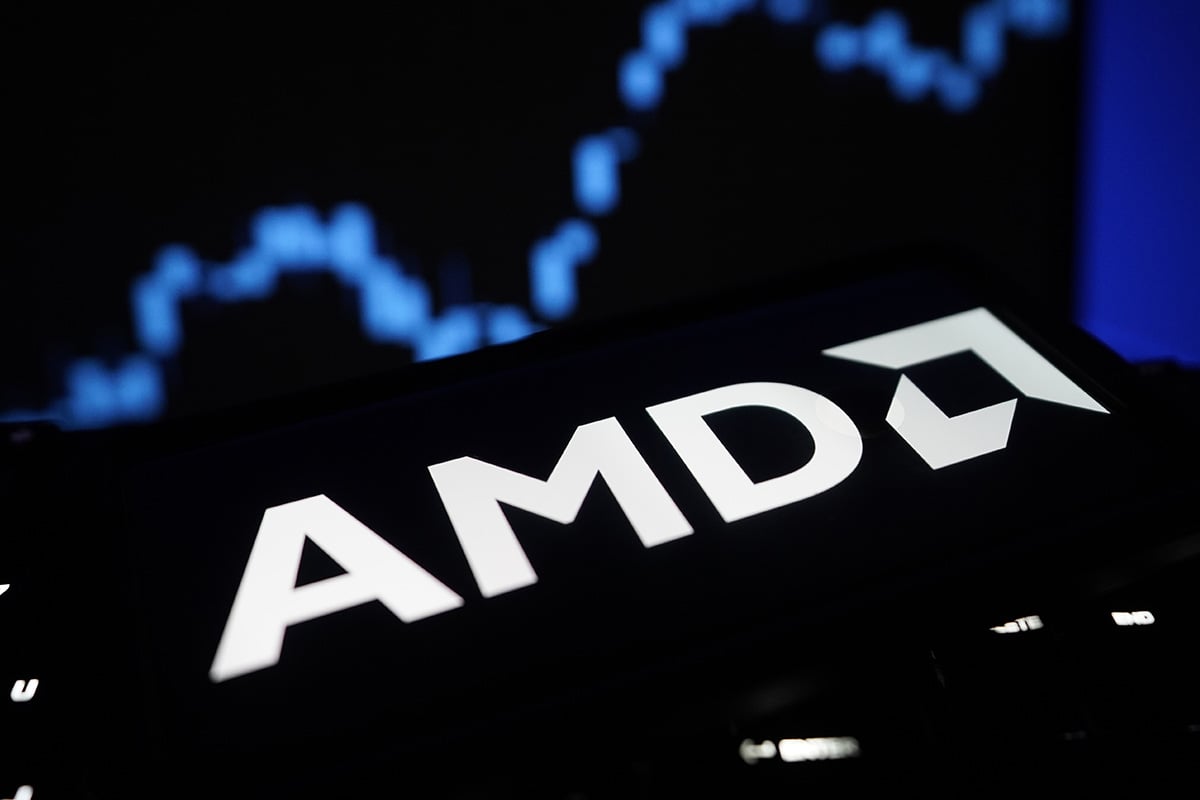TLDR
- AMD stock fell over 6% following disappointing Q2 earnings, particularly weak performance in AI data center division
- Stock broke below 20-day moving average for first time since April, testing $160 support level
- Intel received $2 billion investment from SoftBank, making investors feel left out of AMD
- Competition intensifies as Nvidia accelerates chip development and Arm Holdings moves to in-house production
- China represents 24% of AMD revenue, creating geopolitical risk from trade tensions
Advanced Micro Devices saw its three-month rally come to an abrupt halt this week. The chip maker’s stock dropped more than 6% in after-hours trading following its latest quarterly earnings report.
The earnings disappointment centered on AMD’s AI-driven data center division. While revenue edged slightly above estimates, the underperformance in this key growth area rattled investors.
The selloff initially appeared overdone. AMD opened the next day with a large gap higher, briefly touching $186.65.
However, momentum quickly faded. By the end of last week, the stock had reversed lower once again.
The decline deepened this Tuesday when AMD tested the $160 level. More troubling for bulls, shares fell below the 20-day simple moving average for the first time since April.
This technical breakdown suggests the uptrend may be losing steam. The stock had been climbing steadily since April before hitting this roadblock.

Competitive Pressures Mount
The semiconductor sector is becoming increasingly crowded and aggressive. Nvidia has accelerated chip development to defend its position in the Chinese market while advancing its Rubin processor line.
Arm Holdings shifted toward in-house chipmaking to secure a stronger position in global supply chains. This move puts additional pressure on AMD’s market share.
Intel attracted fresh attention with a $2 billion investment from SoftBank. The deal values Intel shares at $23 each and makes SoftBank the fifth-largest investor overall.
The SoftBank investment gave Intel stock a nearly 7% boost. This left AMD investors feeling overlooked, contributing to Tuesday’s 5.49% decline in AMD shares.
Analyst Views and Challenges
Goldman Sachs analyst James Schneider maintains optimism about AMD’s fundamentals. He noted the company’s leading position in data center GPUs.
However, Schneider warned that sky-high investor expectations could cap near-term upside. Scaling constraints also present execution risks.
His projections suggest AMD’s data center GPU revenue might reach $10-11 billion by 2026. But he stressed that execution risks remain substantial.
China accounts for roughly 24% of AMD’s total revenue. This creates exposure to geopolitical tensions between Washington and Beijing.
U.S. restrictions on advanced chip exports pose ongoing threats. Supply chain realignments to reduce China dependence may increase costs and slow growth.
The current competitive landscape presents fresh challenges. Rivals are making strategic moves while AMD navigates earnings disappointments and geopolitical uncertainties.


